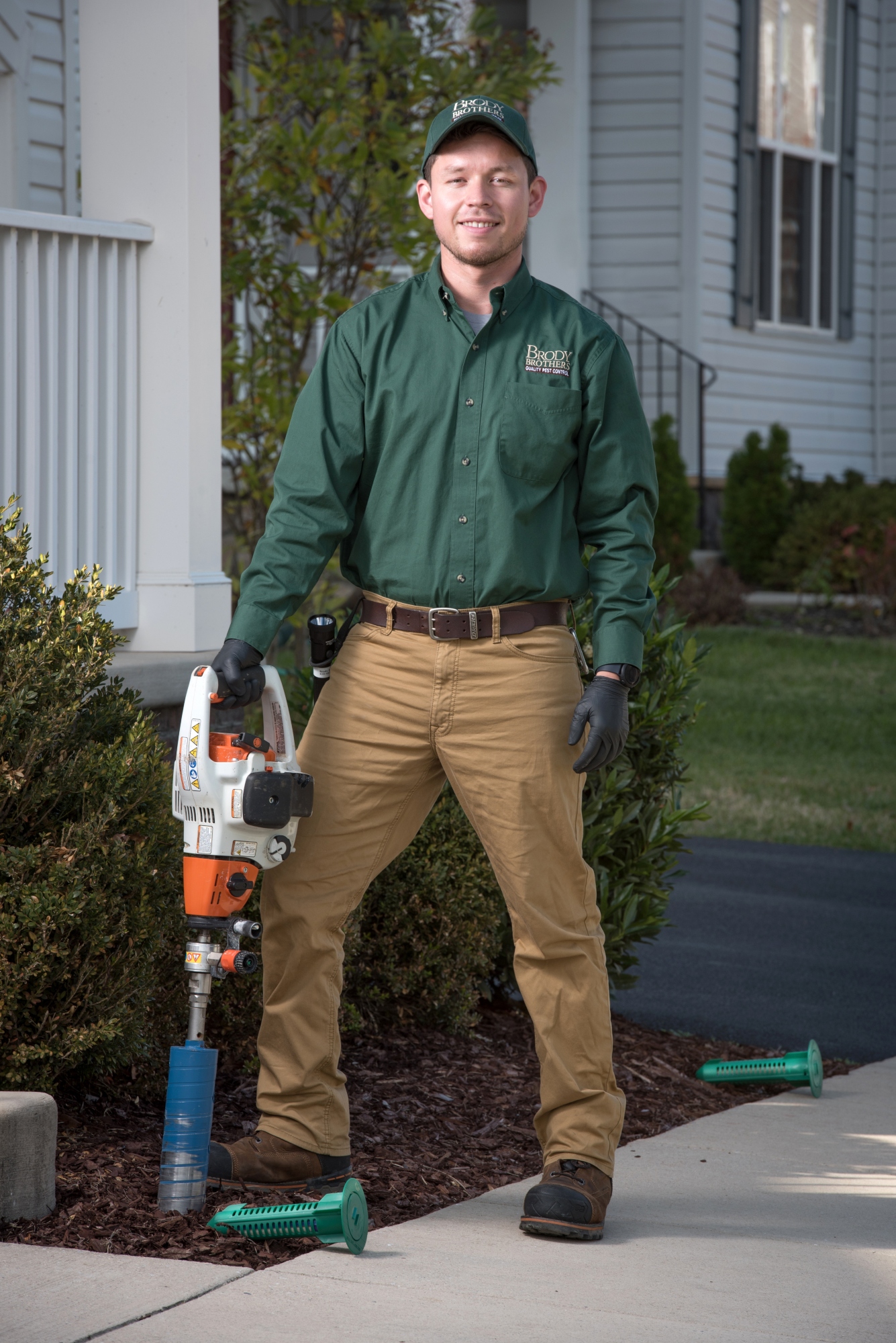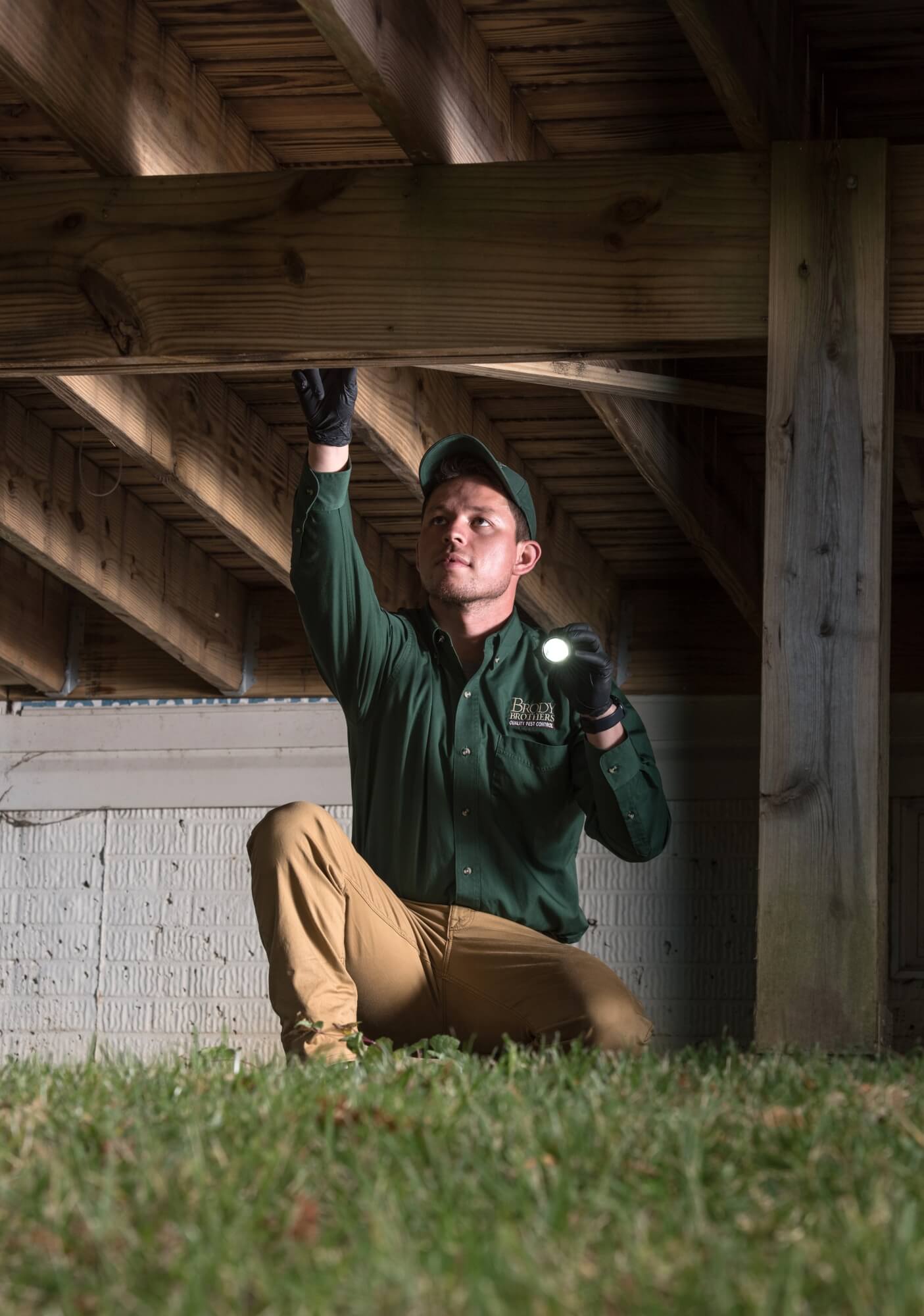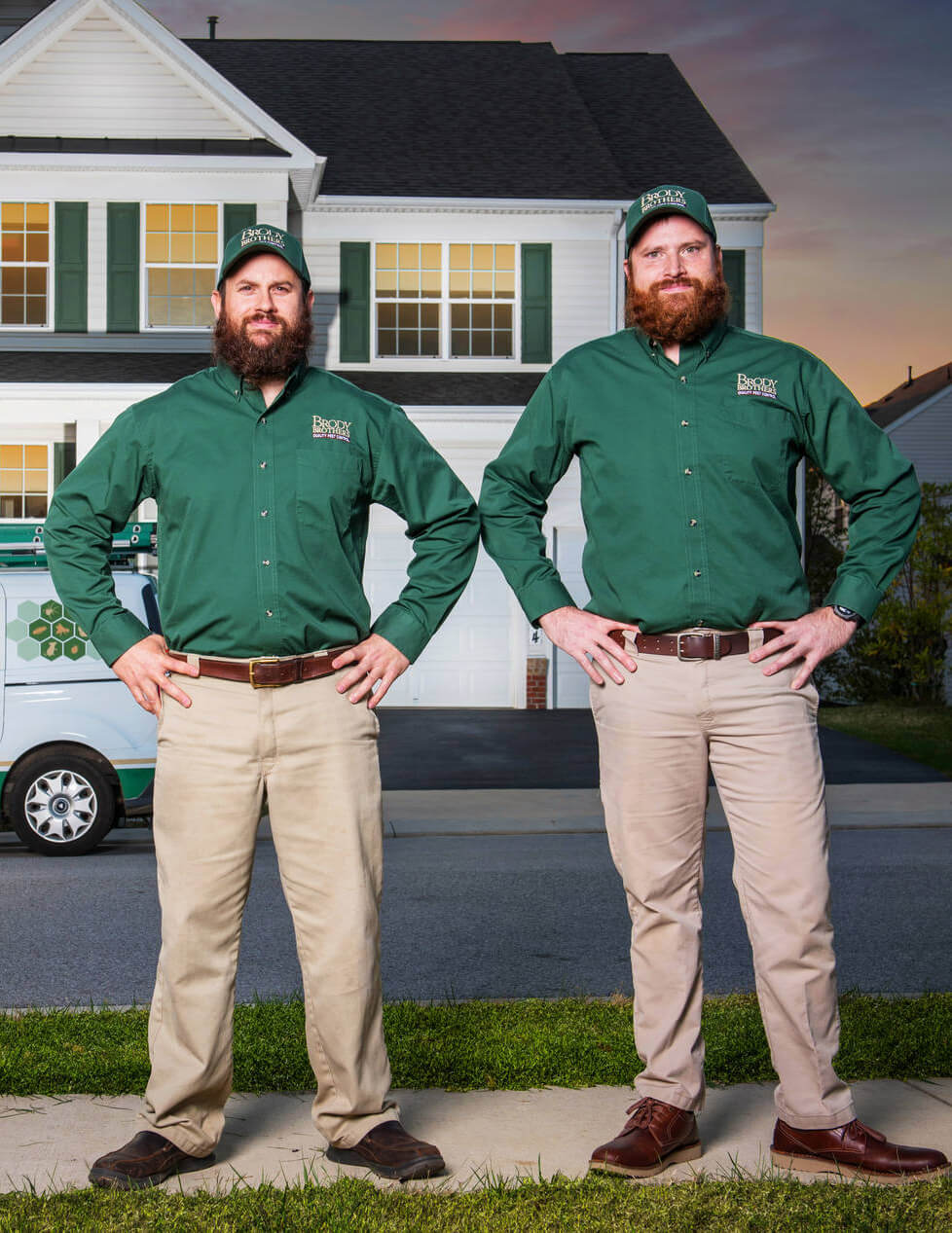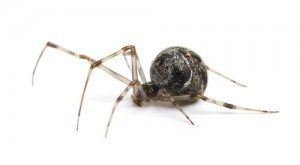Every state except Alaska has some variety of house spiders living within its borders. One common species in Maryland is the American house spider:
- Dull brown or gray in color so that it can blend in easily
- Bulbous abdomen
- Long skinny legs with a spinneret (to help in weaving) on the last segment of the fourth leg
- ¼ inch long and up to 1 inch wide with legs outspread
House spiders may sometimes be mistaken for the brown widow spider, but it lacks the widow’s red hourglass on the abdomen.


House spiders favor human dwellings—sheds, garages, basements and attics—to the great outdoors. They build messy, tangled webs anyplace that they can, around windows, in corners, and between two adjoining edges in a building (between wall and ceiling, for example). Females often build their webs close together, but they will fight if the contact becomes too close.
When feeding, house spiders wait at the center of their web and when they feel a disturbance will throw out a silken strand to entrap their prey. They inject venom into their victims, wrap them and move them off the web to devour later (and to clear the web for the next victim).
The female house spider can lay up to 3,000 eggs in her lifetime, but generally lays about 250 at a time in a brown, tear-shaped sac that hangs on the web. They protect that sac until the young spiders hatch.
House spiders live about a year after reaching maturity.

As a Home Protection Plan customer, if you’re not satisfied with our pest control service, we will service your home at no additional cost until your issue is solved or receive your money back from your last scheduled service.

The American House spider is in the same family as the black widow, but its venom is much less toxic and won’t harm humans. These spiders rarely bite anyway, unless they feel threatened.
Cobwebs are messy, however, and many homeowners would prefer not to have to constantly clean them out. To rid your home of house spiders you can try:
- Vacuuming the webs (and spiders) up and disposing of them outdoors
- Sealing cracks and crevices around the home that may be letting them in
- Applying some kind of perimeter treatment to discourage unwelcome visitors
If the cobwebs keep reappearing, it’s time to get professional pest control help with your spider problem.
Contact Brody Brothers and we’ll help you get the web out.


